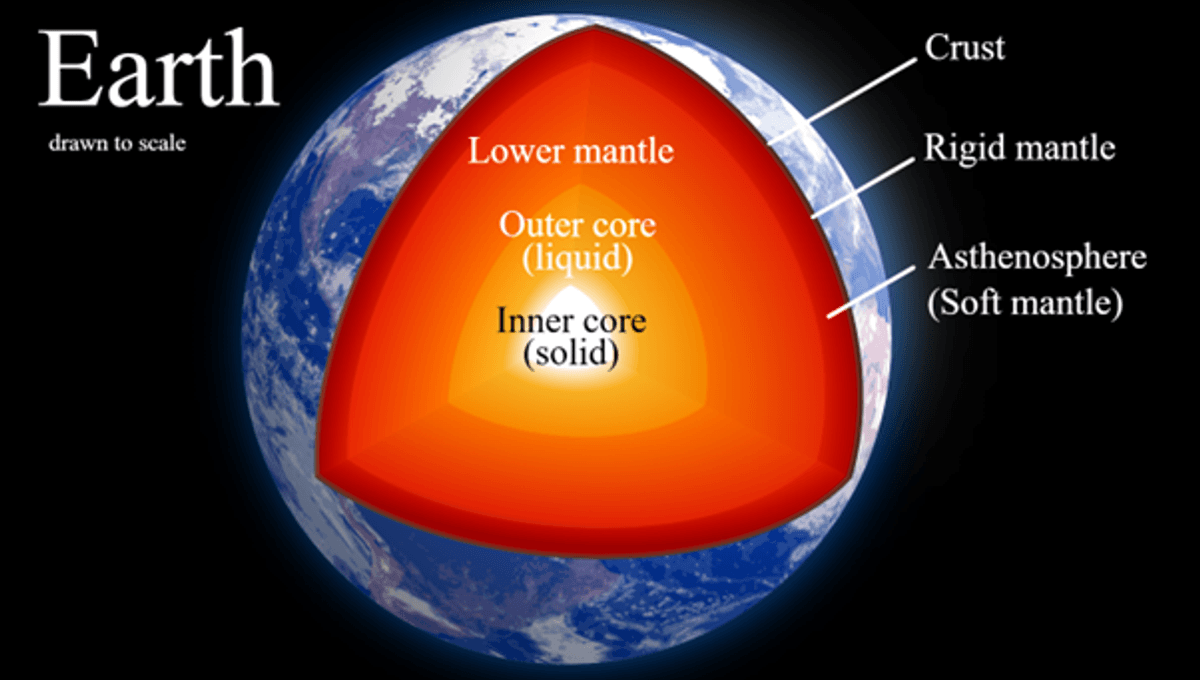
When trying to identify the nature of dark matter, sometimes it’s the things it doesn’t do that tell us the most, like turning the center of the Earth liquid. A new study has shown that if some models and particle masses for dark matter were correct, a “dark inferno” would be released within the Earth’s core. The absence of such an inferno, within detectable limits, can be used to narrow the range of dark matter possibilities.
It sounds like the plot of a bad science fiction film: dark matter accumulates in the center of the Earth, releasing heat until it melts the core. Presumably, in the Hollywood version, the planet can only be saved by a plucky collection of scientists and drill operators who release the heat to space. More realistically, however, Dr Christopher Cappiello and Dr Tansu Daylan of Washington University, St Louis, note that dark matter particles probably are accumulating within the Earth, and might be releasing heat in the process.
Physicists overwhelmingly agree that dark matter must exist to explain our observations of the way galaxies move and bend light. Identifying what dark matter is composed of is one of the central quests of modern science, with many competing models and particle masses proposed. Models agree that dark matter should concentrate where gravitational forces are strongest. That includes the center of the galaxy and the Sun, but also, to a much lesser extent, the center of the Earth.
What happens then depends on the model, but Cappiello and Daylan note that many models suggest that dark matter particles and antiparticles should encounter each other at the core. The annihilation that results would produce energy, which most likely would eventually become heat. “The annihilation rate scales with the dark matter density squared,” they write.
The pair acknowledge they are not the first to point this out, writing: “Past work has been done on the effect that this heat would have once it reached the surface.” However, unless the amount of energy released is quite large, it might be very difficult to distinguish from heat from radioactive decay.
Cappiello and Daylan note that if enough heat is being released, it would produce temperatures high enough to overcome the pressures at the Earth’s center and melt part of the core. They call this scenario a “dark inferno”, and it certainly conjures visions of a Medieval hell.
We know from the way seismic waves travel through the Earth that there is a solid core about 2,500 kilometers (1,500 miles) wide. It’s normally assumed that this core goes all the way to the Earth’s center. If a very large area in the middle had melted, we would know, but Cappiello and Daylan point out that a sufficiently small area would be undetectable using current techniques.
By considering existing data, the pair set a maximum size on this potential liquid center: a radius of around 400 kilometers (240 miles). They argue that this, in turn, sets a ceiling on the energy the process could be releasing at about 20 Terrawatts.
The center of the Earth is certainly very hot, but this is usually attributed to radioactive decay of long-lived isotopes such as uranium and thorium in its core, not the more efficient process of matter-antimatter destruction.
However, it’s not as simple as a question of calculating how much energy can be released and setting that as the ceiling. Dark matter’s accumulation in the core would require not only gravity, but for some energy to be lost, even a very small amount, when dark matter and ordinary matter particles collide, causing orbits to decay. The mass of the dark matter particles would determine the extent to which they concentrate in the inner 400 kilometers or are more evenly spread.
For light particles, the work doesn’t add anything to what we know, because existing studies have already set lower barriers to the amount of energy that could be released than Cappiello and Daylan do. However, at higher particle masses, the pair claim their work provides new insight into what would be possible without us noticing.
Nevertheless, all this work relies on dark matter having certain characteristics, which may not be correct. For example, if, like ordinary matter, there is far more dark matter than dark antimatter, annihilation rates would be low. Similarly, if most of the energy released when matter and antimatter meet is in the form of neutrinos, the heating effect would be much lower and harder to detect.
The work is open access in Physical Review D.
Source Link: Theoretical Dark Matter Infernos Could Melt The Earth’s Core, Turning It Liquid